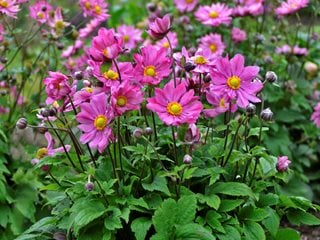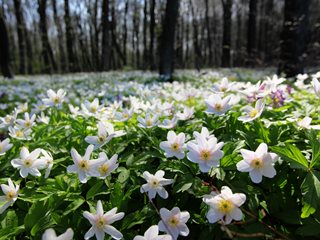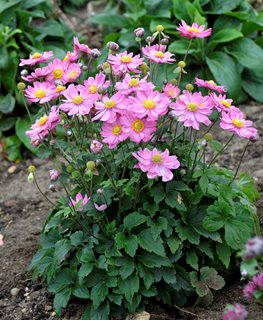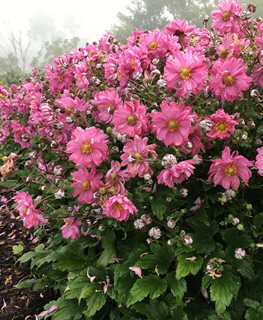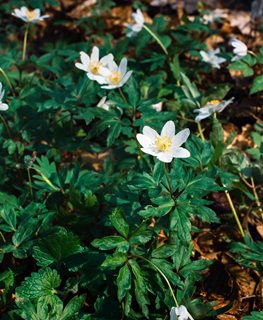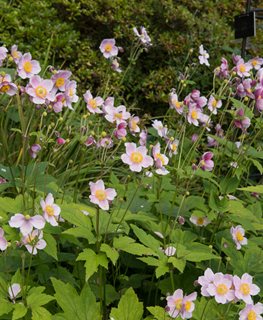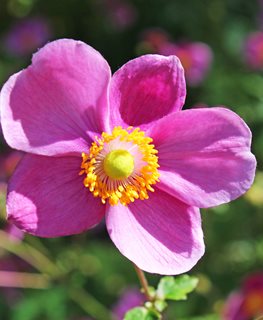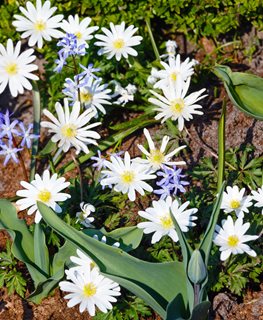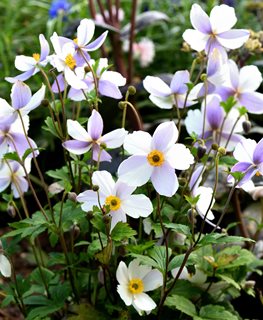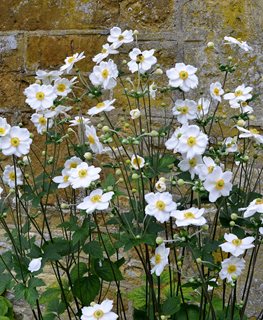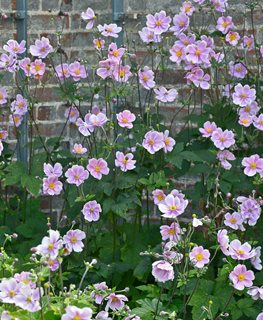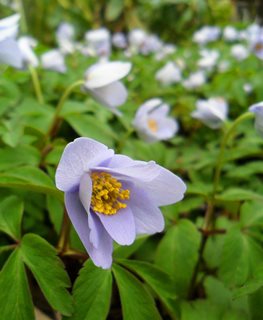Anemone Flowers for All Seasons
Offering spring, summer, and fall bloomers, anemone plants are one of the few perennials that carry your garden from one season to the next.If you’re looking for a plant that will light up your garden at both ends of the season and even in between, Anemone is the perfect choice. Spring-blooming varieties begin showing off their delicate flowers in April, often sharing the spotlight with tulips and daffodils. Summer and fall bloomers come into the limelight as early as July and often continue well into autumn, putting on a spectacular grand finale. In addition to offering a wide range of bloom times, these shade-tolerant perennials come in an impressive array of flower forms, colors, and heights.
Despite their graceful beauty and dainty blooms, most are tough and undemanding. If they have a downside, it’s their tendency to naturalize and multiply in number year after year. But if you have the space, you’ll welcome the slow and steady population increase. Anemones make the greatest impact when grown en masse, and having too many is rarely a problem.
On this page: Basics | What to Plant | Growing Guide | Anemone Pictures | Garden Uses
THE BASICS
Common name:
Windflower, describing how the buds and flowers bob and sway in the slightest breeze. The botanical name is derived from the Greek word ánemos, meaning wind.
Zones:
Varies, but most are hardy from zones 4 to 8.
How they grow:
Depending on the species, anemones can grow from tubers, fibrous roots, or rhizomes.
Exposure conditions:
Partial shade to full sun.
Height:
From 6 inches to more than 4 feet.
Special attributes:
- Attracts butterflies and many other pollinators.
- Deer and rabbit resistant.
- Long bloom period, often lasting two months or more.
- Resistant to most insects and diseases.
- The stiff, wiry stems need no staking.
Toxicity:
A word of warning, all anemones are toxic if ingested, so be sure to keep them out of reach of children and pets. (See more: Common Poisonous Plants for Dogs and Cats)
WHAT TO PLANT
There are about 120 species, but they can generally be divided into two groups: Spring and early summer bloomers and late summer to fall-flowering species.
Spring blooming
Some of the first to bloom in spring are A. blanda (Grecian windflower), A. canadensis (Canada or meadow anemone), A. nemorosa (wood anemone), and A. sylvestris (snowdrop anemone). Typically shorter than their fall-blooming cousins, they naturalize readily to form low carpets of ferny foliage topped by petite white flowers, sometimes tinged in pink or purple.
Summer and fall blooming
This group (collectively called Japanese or Chinese anemone because of their East Asian origin) includes A. hupehensis, Anemone xhybrida, A. tomentosa, and their many cultivars. All bear airy clusters of 2- to 3-inch flowers that wave on wand-like stems a foot or more above mounds of attractive deeply-divided foliage. The flowers can be single, semi-double, or double in various shades of white, pink, and purple, all with showy yellow stamens. Plants spread by seeds and rhizomes once established, some (especially the fall-blooming species) can be aggressive. Most are less than 3 feet tall, but some cultivars can top out at 5 feet when the flower stalks reach full height.
GROWING GUIDE
Where to plant:
For the best performance, plant anemones in well-drained soil rich in organic matter, which will help maintain a consistent moisture level. Although they grow well in partial shade, fall-blooming varieties can become leggy and anemic if they don’t receive enough sunlight. A site protected from afternoon sun is ideal.
When to plant:
Fall bloomers are best planted in spring, especially in colder climates. If planted later in the season, they may not have time to establish a strong root system that can survive winter. Plant the tubers of spring-blooming species in the fall for blooms the following spring.
How to plant:
Plant rhizomes or tubers horizontal to the ground to a depth of about 2 to 3 inches, spacing them about 3 to 6 inches apart. The wider spacing is best for rhizomatous species that need room to spread. Tubers often benefit from an overnight soaking, which will encourage them to sprout faster. Before planting, amend the soil by digging in compost, leaf mold or other organic matter.
Watering:
During the growing season, keep the soil consistently moist by watering plants regularly. Japanese anemone can tolerate drier soil if grown in partial shade. All will suffer when grown in soggy soil, so avoid planting them in areas where water may accumulate.
Fertilizing:
It’s not necessary to fertilize them, but a topdressing of compost in the spring will help boost flower production and vigor.
Dividing and propagating:
Anemones are not always easy to grow from seed; however, the fall-blooming species can spread aggressively by seed in warmer zones. You can also divide fall bloomers in spring as the plants emerge or by taking root cuttings. Divide spring-blooming plants in late summer after the leaves fade. Those that spread by creeping rhizomes multiply readily once they become established, but they are easy to dig up and transplant if they begin trespassing beyond their boundaries.
Pruning:
They don’t require deadheading to prolong blooming, but the spent flower heads provide little ornamental value. Once the petals fall, clip off the flowers and their long stems to keep plants looking neat and to prevent self-seeding.
Winter care:
Anemones benefit from a good mulching in the fall to prevent frost heaving and to provide extra protection from the cold, especially in northern gardens. After the first hard frost, the foliage of Japanese anemones will blacken. Cut it back to the ground if you find it to be an eyesore. After the flowers have faded from spring bloomers, allow the foliage to remain until it yellows so the plant can produce the energy it needs for next year’s flowers.
ANEMONE PICTURES
GARDEN USES
Use shorter spring-blooming anemones as groundcovers or underplantings in woodland gardens and shade gardens or to accentuate other early bloomers such as daffodils, columbine and bleeding hearts. A. blanda and A. nemorosa go dormant after flowering and are best combined with warm-season perennials that will fill the space they leave behind.
The more statuesque fall-blooming anemones work well in mass plantings or the back of the border and combine beautifully with other fall perennials such as asters, purple coneflowers, ornamental grasses, goldenrod and black-eyed Susans.
RELATED:
Top 20 Spring-Blooming Bulbs
All-Star Spring Flowers for Your Garden
Ideas for an Alluring Autumn Garden
